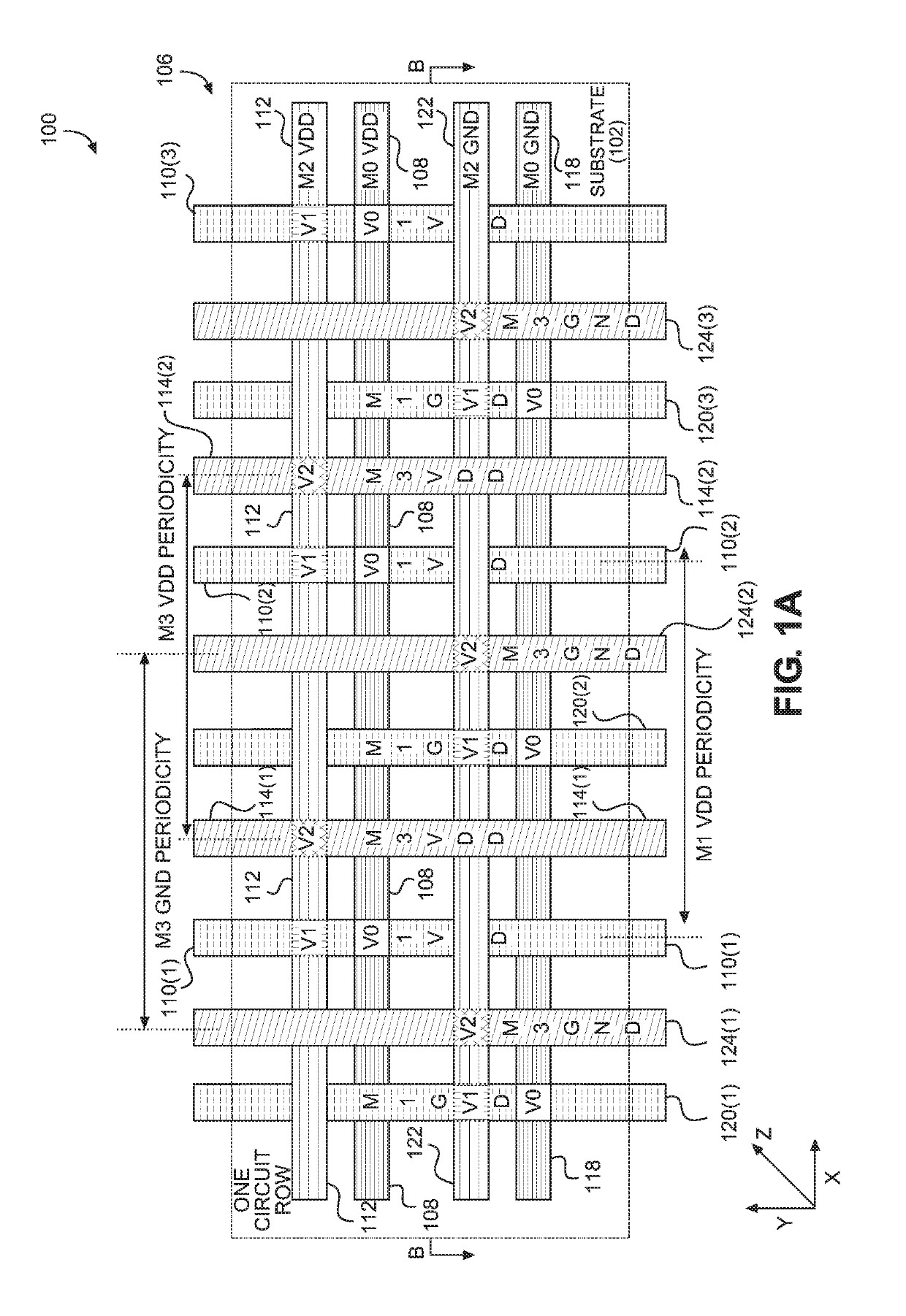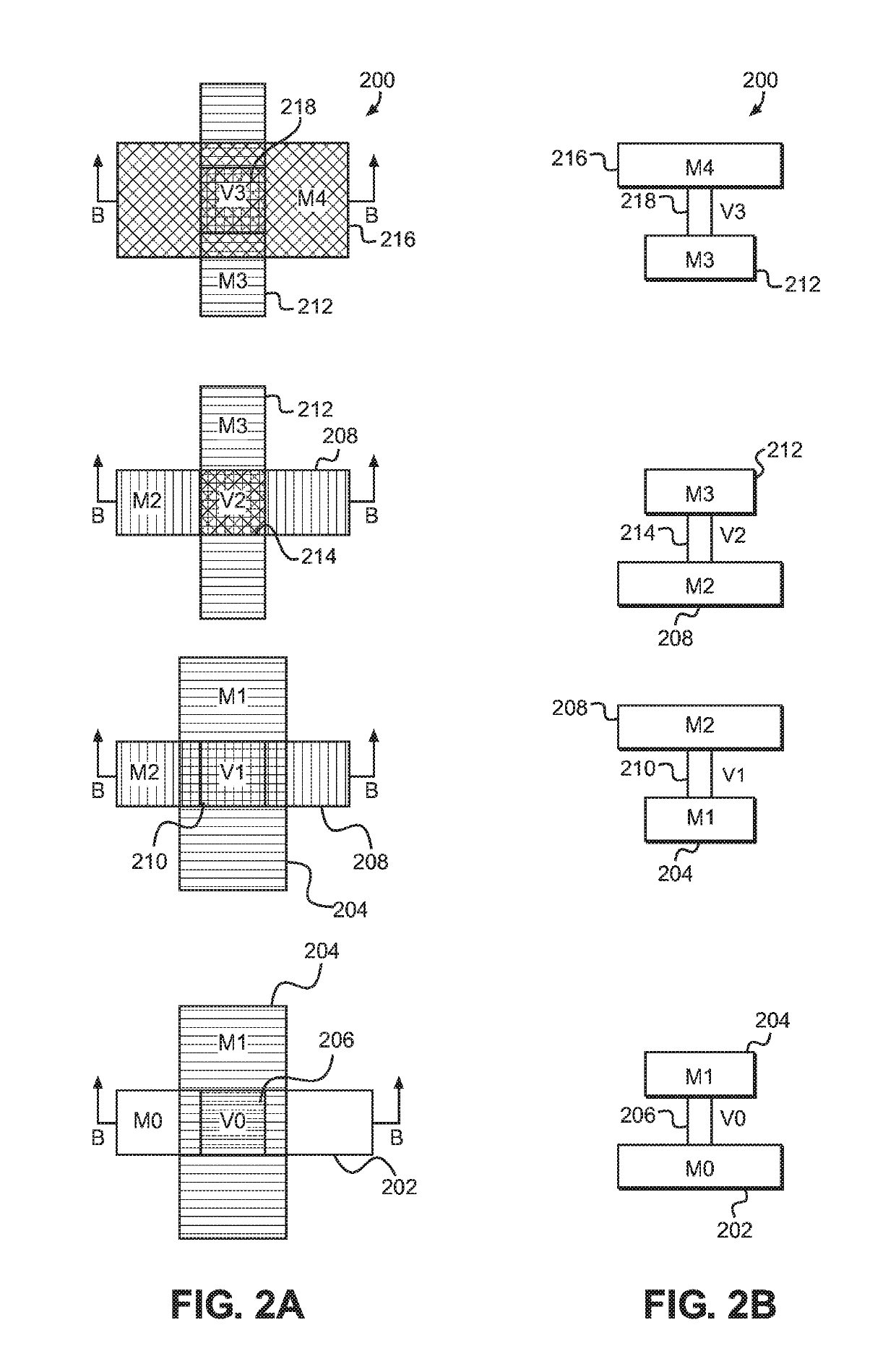POWER DISTRIBUTION NETWORKS (PDNs) USING HYBRID GRID AND PILLAR ARRANGEMENTS
a technology of power distribution network and hybrid grid, applied in the field of improving power distribution network, can solve the problems of low efficiency, low efficiency, and high local junction temperature, and achieve the effect of reducing thermal activity
- Summary
- Abstract
- Description
- Claims
- Application Information
AI Technical Summary
Benefits of technology
Problems solved by technology
Method used
Image
Examples
Embodiment Construction
[0023]With reference now to the drawing figures, several exemplary aspects of the present disclosure are described. The word “exemplary” is used herein to mean “serving as an example, instance, or illustration.” Any aspect described herein as “exemplary” is not necessarily to be construed as preferred or advantageous over other aspects.
[0024]Aspects disclosed in the detailed description include power distribution networks (PDNs) using hybrid grid and pillar arrangements. In particular, a process for designing an integrated circuit (IC) considers various design criteria when placing and routing the PDN for the IC. Exemplary design criteria include switching frequencies, current densities, and decoupling capacitance and their impact on temperature. In areas of high localized temperature, a power grid structure is used. In other areas, shared metal track pillars may be used. By mixing power grids with pillars, the IC may reduce local hotspots by allowing the grid to help dissipate heat...
PUM
 Login to View More
Login to View More Abstract
Description
Claims
Application Information
 Login to View More
Login to View More - R&D
- Intellectual Property
- Life Sciences
- Materials
- Tech Scout
- Unparalleled Data Quality
- Higher Quality Content
- 60% Fewer Hallucinations
Browse by: Latest US Patents, China's latest patents, Technical Efficacy Thesaurus, Application Domain, Technology Topic, Popular Technical Reports.
© 2025 PatSnap. All rights reserved.Legal|Privacy policy|Modern Slavery Act Transparency Statement|Sitemap|About US| Contact US: help@patsnap.com



